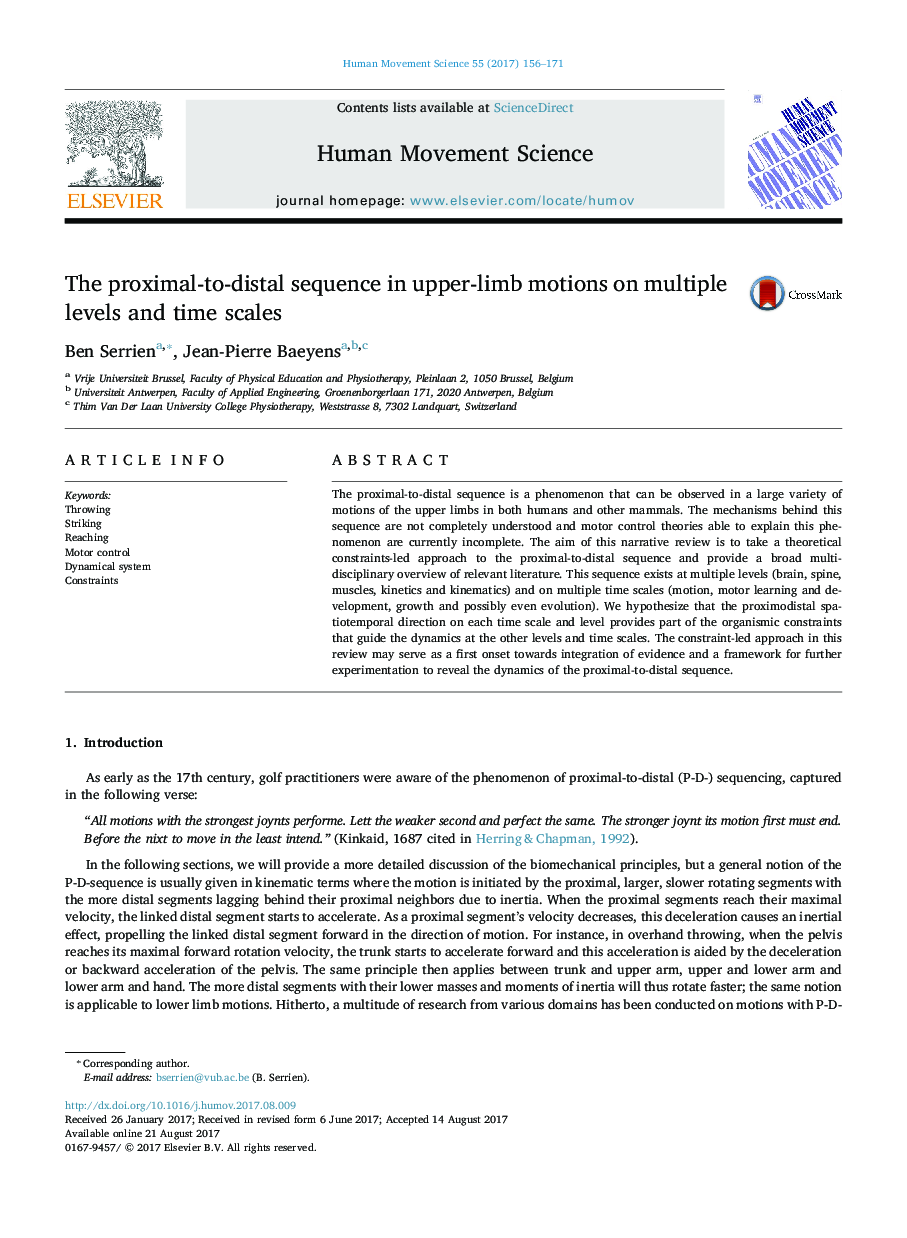| Article ID | Journal | Published Year | Pages | File Type |
|---|---|---|---|---|
| 5041939 | Human Movement Science | 2017 | 16 Pages |
â¢The proximal-to-distal sequence is a typical upper limb motion pattern in mammals.â¢This sequence may be observed at different levels: brain, muscles, kine(ma)tics.â¢A number of spatiotemporal constraints lies at the origin of its ubiquity.
The proximal-to-distal sequence is a phenomenon that can be observed in a large variety of motions of the upper limbs in both humans and other mammals. The mechanisms behind this sequence are not completely understood and motor control theories able to explain this phenomenon are currently incomplete. The aim of this narrative review is to take a theoretical constraints-led approach to the proximal-to-distal sequence and provide a broad multidisciplinary overview of relevant literature. This sequence exists at multiple levels (brain, spine, muscles, kinetics and kinematics) and on multiple time scales (motion, motor learning and development, growth and possibly even evolution). We hypothesize that the proximodistal spatiotemporal direction on each time scale and level provides part of the organismic constraints that guide the dynamics at the other levels and time scales. The constraint-led approach in this review may serve as a first onset towards integration of evidence and a framework for further experimentation to reveal the dynamics of the proximal-to-distal sequence.
